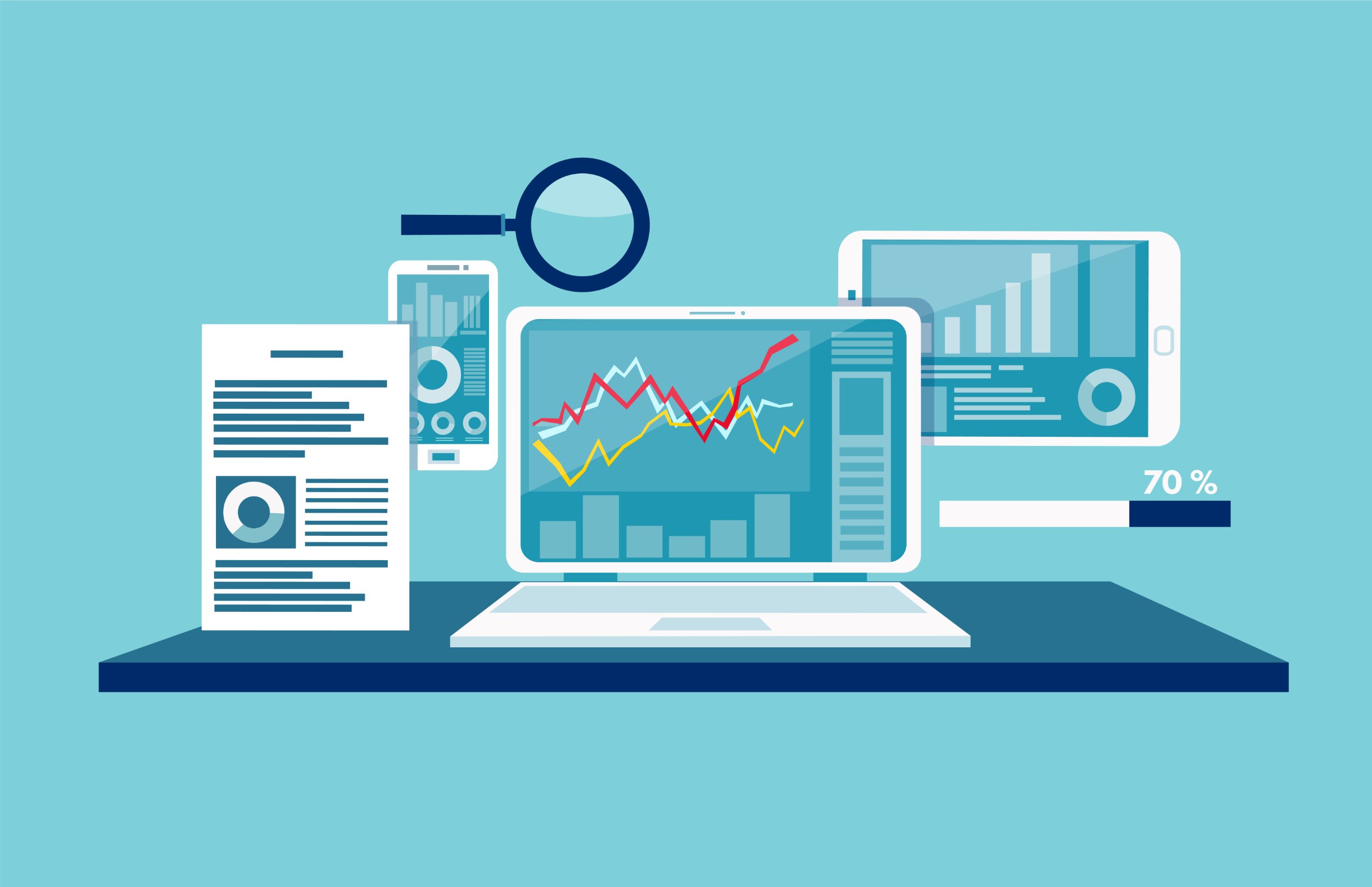In today’s digital age, social media has become an integral part of our lives. People share their opinions, thoughts, and experiences on various platforms, creating a vast landscape of conversations. For businesses and brands, tapping into this wealth of information is crucial for understanding their target audience, monitoring brand reputation, and gaining valuable insights. This is where social media listening platforms come into play. In this article, we will explore the concept of social media listening platforms, their benefits, and how they can be effectively utilized to drive success in the digital realm.
What Are Social Media Listening Platforms?

Social media listening platforms, also known as social media monitoring tools, are powerful software solutions designed to track and analyze online conversations across various social media platforms. These platforms employ advanced algorithms to capture, process, and interpret vast amounts of user-generated content, including posts, comments, reviews, and mentions. By monitoring these conversations, businesses gain valuable insights into their customers’ opinions, preferences, and sentiments.
Why Are Social Media Listening Platforms Important?
In the digital era, where every customer has a voice, brands cannot afford to overlook social media conversations. Social media listening platforms provide a way to tap into the collective wisdom of the online community, helping businesses understand their audience on a deeper level. By staying attuned to these conversations, brands can identify emerging trends, monitor brand reputation, and gain insights that inform their marketing and business strategies.
How Social Media Listening Platforms Work
1. Data Collection Methods
Social media listening platforms collect data from various sources, including social media networks, blogs, forums, and news sites. They use APIs and web scraping techniques to gather mentions and conversations relevant to your brand.
2. Analyzing Data
Once the data is collected, these platforms use algorithms to analyze it. They classify mentions, detect sentiment, and identify key trends and influencers. Advanced platforms leverage AI and machine learning to enhance accuracy.
3. Reporting and Visualization
The final step is presenting the data in a digestible format. Social media listening platforms provide dashboards and reports that highlight key insights, helping you make informed decisions.
Key Features and Functionality
1. Real-time Monitoring
One of the primary features of social media listening platforms is real-time monitoring. These platforms continuously scan social media channels, ensuring that businesses stay updated on the latest conversations. Real-time monitoring enables brands to respond promptly to customer queries, concerns, and feedback, fostering stronger relationships and enhancing customer satisfaction.
2. Sentiment Analysis
Sentiment analysis is a crucial functionality offered by social media listening platforms. Using natural language processing and machine learning algorithms, these platforms determine the sentiment behind social media conversations. By understanding whether sentiments are positive, negative, or neutral, businesses can gauge customer satisfaction levels, identify potential issues, and take appropriate actions.
3. Competitor Analysis
Social media listening platforms also enable businesses to monitor and analyze their competitors’ activities. By tracking conversations related to competitors’ brands, products, or services, companies can gain valuable insights into market trends, identify competitive advantages, and refine their strategies to stay ahead in the market.
4. Influencer Identification
Identifying influencers within a target market is vital for effective influencer marketing campaigns. Social media listening platforms can help businesses identify influential individuals who have a significant impact on their audience. By engaging with these influencers, brands can amplify their message, extend their reach, and build mutually beneficial partnerships.
Benefits of Social Media Listening Platforms

1. Customer Insights and Market Research
Social media listening platforms provide businesses with a goldmine of customer insights. By analyzing conversations around their brand, products, or industry, companies can understand their customers’ needs, preferences, and pain points. These insights can inform product development, marketing strategies, and overall business decision-making.
2. Reputation Management
Maintaining a positive brand reputation is essential in the digital landscape. Social media listening platforms enable businesses to monitor brand mentions and sentiment, allowing them to proactively address any negative feedback or issues. By swiftly responding to customer concerns, brands can build trust, resolve problems, and enhance their reputation.
3. Crisis Response
In times of crisis, social media listening platforms become invaluable tools. By monitoring conversations during a crisis, brands can assess the sentiment, identify potential threats, and take immediate action to mitigate negative impacts. Timely crisis response can help companies protect their reputation, regain customer trust, and minimize the long-term effects of the crisis.
4. Competitive Intelligence
Understanding the competitive landscape is crucial for any business. Social media listening platforms provide real-time insights into competitors’ activities, customer sentiments, and emerging trends. By staying informed about their competitors, businesses can adapt their strategies, identify market gaps, and gain a competitive edge.
Choosing the Right Social Media Listening Platform
Selecting the appropriate social media listening platform is crucial for maximizing the benefits it offers. Consider the following factors when choosing a platform:
1. Define Your Goals
Clearly define your objectives and the specific insights you seek to gain from social media listening. Whether it’s customer feedback, crisis management, or market research, aligning your goals will help you identify the most suitable platform.
2. Evaluate Features and Integration
Assess the features and functionality of different platforms. Look for capabilities such as sentiment analysis, real-time monitoring, competitor analysis, and influencer identification. Additionally, consider how well the platform integrates with your existing marketing and customer relationship management tools.
3. Consider Scalability and Pricing
Evaluate the scalability and pricing options offered by social media listening platforms. Ensure that the platform can handle the volume of data you anticipate and that it fits within your budget. Consider any additional costs for extra features or support.
Implementing Social Media Listening in Your Strategy
1. Setting Clear Objectives
Define what you want to achieve with social media listening. Whether it’s improving customer service, driving engagement, or spotting trends, clear objectives will guide your efforts.
2. Integrating with Other Tools
For maximum efficiency, integrate your social media listening platform with other tools like CRM systems and marketing automation software. This integration ensures a seamless flow of data and insights.
3. Training Your Team
Ensure your team is well-versed in using the platform. Provide training sessions and resources to help them understand how to leverage the tool effectively.
Best Practices for Effective Social Listening
To make the most out of social media listening, follow these best practices:
1. Set Up Relevant Keywords and Topics
Create a comprehensive list of keywords, hashtags, and topics that are relevant to your brand and industry. This ensures that the social media listening platform captures all relevant conversations and filters out irrelevant noise.
2. Monitor Multiple Platforms
Expand your monitoring beyond just a single social media platform. Customers engage in conversations across various platforms, including Facebook, Twitter, Instagram, LinkedIn, and more. Monitor and analyze conversations from multiple platforms to gain a holistic understanding of your audience.
3. Analyze and Act on Insights
Collecting data is only the first step. Analyze the insights generated by the social media listening platform and take appropriate actions based on the findings. Whether it’s addressing customer concerns, refining marketing strategies, or improving products, use the insights to drive tangible results.
4. Engage and Respond to Customers
Social media listening is not just about passive monitoring; it’s about active engagement. Respond to customer queries, comments, and feedback in a timely and personalized manner. Engaging with customers demonstrates your commitment to their satisfaction and fosters brand loyalty.
Challenges
1. Data Privacy Concerns
With increasing focus on data privacy, ensuring compliance with regulations like GDPR is crucial. Platforms need to handle data responsibly to protect user privacy.
2. Managing Large Volumes of Data
The sheer volume of data on social media can be overwhelming. Effective filtering and analysis are key to managing this data efficiently.
3. Ensuring Accuracy
Accurate sentiment analysis and trend identification require sophisticated algorithms. Continuous improvement and fine-tuning of these algorithms are necessary for reliable insights.
Future Trends
1. Artificial Intelligence and Machine Learning
The future of social media listening lies in the integration of artificial intelligence (AI) and machine learning (ML) technologies. These advancements will enable platforms to better analyze and interpret complex data, automate sentiment analysis, and provide more accurate insights and predictions.
2. Integration with Other Marketing Tools
Social listening platforms will increasingly integrate with other marketing tools, such as customer relationship management (CRM) systems, marketing automation platforms, and data analytics tools. This integration will facilitate a seamless flow of insights and enable businesses to create more targeted and personalized marketing campaigns.
3. Enhanced Privacy and Data Protection
As data privacy concerns grow, social media listening platforms will focus on strengthening privacy measures and ensuring compliance with data protection regulations. Users can expect enhanced security features, transparent data handling practices, and increased control over their personal information.
Conclusion
Social listening platforms have revolutionized the way businesses harness the power of online conversations. By effectively utilizing these platforms, brands can gain valuable insights, enhance their reputation, and make data-driven decisions. The future of social media listening holds even more potential as technology continues to advance. Businesses need to embrace these platforms and stay at the forefront of the ever-evolving digital landscape.
Are you ready to unlock the full potential of social media listening for your business? Request a demo from Aim Technologies today and discover how our cutting-edge social media listening platform can revolutionize your marketing strategies and drive success in the digital realm.
FAQs
How does social media listening differ from social media monitoring?
- Social media monitoring primarily involves tracking brand mentions and engagement metrics, whereas social media listening goes beyond surface-level data. It involves analyzing conversations, sentiments, and trends to gain deeper insights into customer opinions, preferences, and market dynamics.
Can social media listening platforms analyze non-English conversations?
- Yes, many social listening platforms offer multilingual capabilities. They can analyze and interpret conversations in different languages, allowing businesses to monitor global audiences and engage with customers worldwide.
Are social media listening platforms suitable for small businesses?
- Absolutely! Social media listening platforms cater to businesses of all sizes. They offer scalable solutions that can be tailored to meet the specific needs and budgets of small businesses, providing valuable insights and competitive advantages.
Can social media listening help identify emerging trends?
- Yes, social listening platforms are excellent tools for identifying emerging trends. By monitoring conversations and analyzing patterns, businesses can spot emerging topics, preferences, and behaviors, allowing them to stay ahead of the curve and adapt their strategies accordingly.
How often should companies review their social media listening strategies?
- Companies should regularly review their social media listening strategies to ensure they align with their evolving business goals and market dynamics. As social media conversations and trends change rapidly, periodic assessments help businesses stay relevant and make necessary adjustments to their listening approaches.




